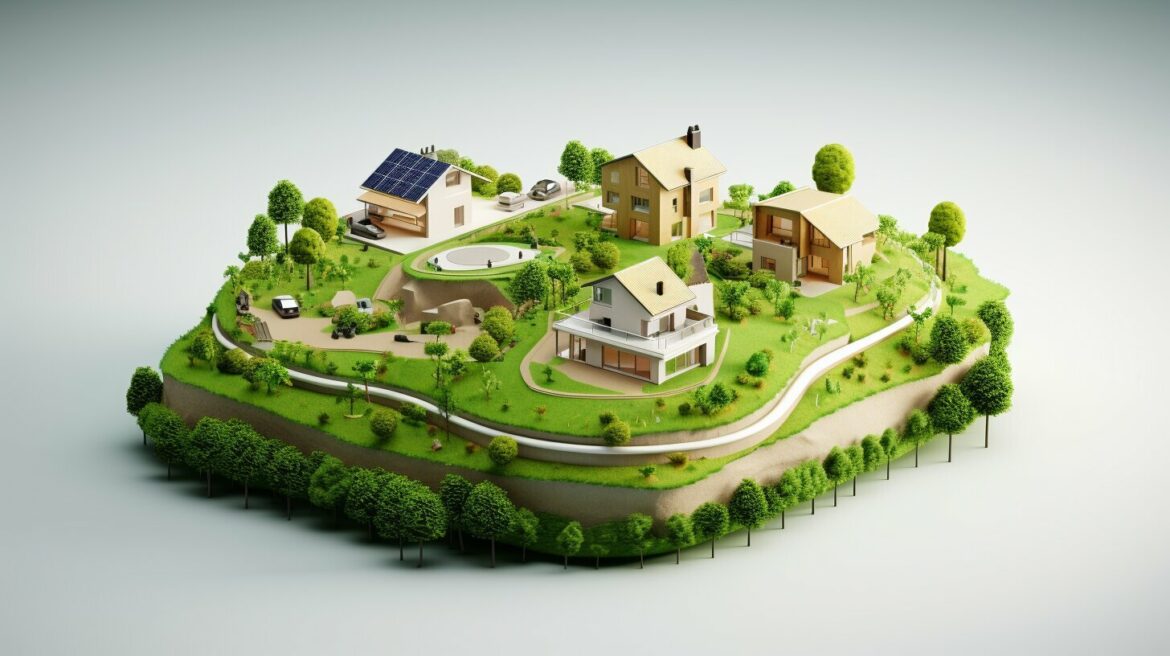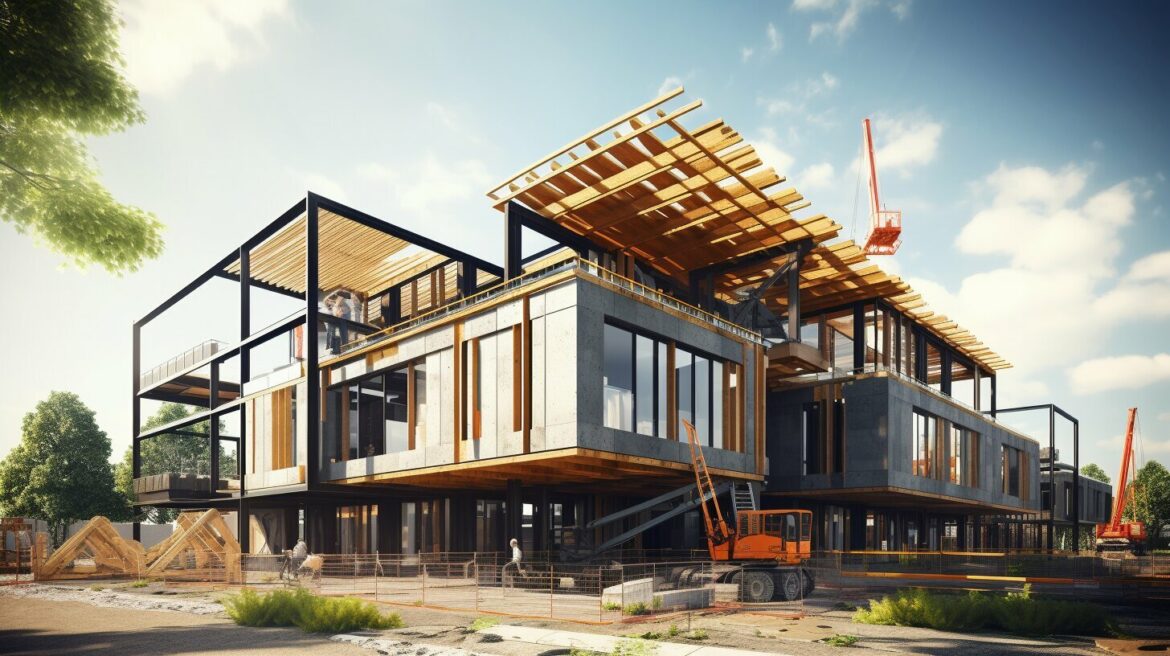As our planet’s resources continue to dwindle, it’s becoming increasingly important to seek out sustainable alternatives in every aspect of our lives. One of the areas where this is particularly crucial is in construction. The building industry is notorious for its impact on the environment, from the use of non-renewable resources to the creation of greenhouse gas emissions.
That’s why exploring sustainable alternatives in construction is so essential. We need eco-friendly building materials and green construction practices that will help us to create environmentally responsible buildings that are kinder to the planet. And one of the most exciting things about this approach is that it’s often not only better for the environment, but also for the people who use and occupy the buildings too.
Key Takeaways:
- Construction has a significant impact on the environment
- Exploring sustainable alternatives is essential
- Sustainable construction can benefit both the planet and its occupants
Sustainable Construction Solutions
As the construction industry continues to move towards sustainability, various methods are emerging to reduce the environmental impact of buildings. From sustainable building methods to infrastructure solutions, the industry is exploring new approaches to creating eco-friendly construction projects.
Sustainable Building Methods
One of the most promising sustainable building methods is timber framing. Using wood sourced from responsibly managed forests, timber framing provides a cost-effective and sustainable alternative to traditional construction methods. Additionally, modular construction allows for faster and more efficient building processes, leading to reduced waste and lower costs.
Another sustainable building method is earth building, which uses mud, straw, or other natural materials to create durable and energy-efficient homes. This method has been used for centuries around the world and offers a low-cost and sustainable alternative to modern construction materials.
Sustainable Infrastructure Solutions
Green roofs are a popular sustainable infrastructure solution, providing natural insulation and reducing heat loss in buildings. Additionally, rainwater harvesting systems allow for the collection and reuse of rainwater, reducing the need for freshwater and contributing to water conservation efforts.
Solar panels and wind turbines are also being used to power buildings, providing a cost-effective and sustainable source of energy. These systems can be combined with energy-efficient design practices to create eco-friendly and sustainable buildings.
Sustainable Construction Materials
Recycling and reusing materials is a key aspect of sustainable construction. Recycled steel and reclaimed wood are being used to reduce the environmental impact of building materials, while natural insulation made from materials like wool, cork, and hemp provide eco-friendly alternatives to traditional insulation materials.

By using sustainable construction materials, the industry can reduce its carbon footprint and contribute to a more sustainable future.
Overall, sustainable construction solutions are reshaping the industry and offering innovative approaches to building eco-friendly projects. By exploring sustainable building methods, infrastructure solutions, and materials, the industry can create environmentally responsible buildings that benefit the planet and future generations.
Eco-Friendly Building Materials
As the construction industry strives to reduce its environmental impact, there is a growing focus on using eco-friendly building materials. These materials are renewable, have a lower carbon footprint and are often more durable than traditional construction materials. Incorporating these materials into new builds and renovations can not only reduce environmental harm but also contribute to creating healthier and more sustainable living spaces.
Green Building Techniques
Green building techniques can enhance sustainability in construction projects. Passive design, for example, involves orienting a building to maximize natural heating and cooling, reducing the need for artificial heating or cooling systems. Energy-efficient systems also offer a way to reduce energy consumption and costs, such as using renewable energy sources like solar panels or wind turbines.
Eco-Friendly Building Materials
Bamboo is a highly sustainable material and can be used for a range of construction purposes, including flooring and structural elements. It grows quickly and has a high yield per acre compared to other timber sources, making it an excellent renewable option.
Cork is another renewable option that is harvested from the bark of cork oak trees without damaging the tree itself. It is a natural insulator with soundproofing qualities that make it a popular choice for flooring and wall insulation.
Natural insulation materials, such as wool, flax, and hemp, offer a sustainable and safe alternative to synthetic insulation. These materials are biodegradable, do not emit harmful chemicals and have excellent thermal insulation properties.
Image Related to Eco-Friendly Building Materials

“Using eco-friendly building materials and green building techniques is a win-win for the environment and our health. Through innovation and creativity, the possibilities are endless for creating sustainable and beautiful living spaces.”
The Growing Popularity of Hempcrete
As the construction industry seeks sustainable alternatives to traditional materials, hempcrete is quickly gaining popularity for its unique properties and eco-friendly benefits. Made from a mixture of hemp hurds, lime, and water, hempcrete is a bio-composite material that offers excellent insulation and carbon sequestration capabilities.
One of the main advantages of hempcrete is its low carbon footprint. Unlike traditional building materials like concrete and steel, hempcrete is a carbon-negative material, meaning it actually absorbs more carbon dioxide from the atmosphere than it produces. This makes it an ideal choice for environmentally conscious construction projects.

In addition to its sustainability benefits, hempcrete also provides excellent insulation properties. Since it is vapour-permeable, it allows the building to breathe and helps regulate temperature and humidity levels. This results in improved energy efficiency and reduced heating and cooling costs.
Another advantage of hempcrete is its fire resistance. Due to the high amount of lime in the mixture, hempcrete is naturally fire-resistant and does not require any additional fireproofing treatments.
Examples of Hempcrete in Construction
Hempcrete has already been used in a variety of building projects around the world, including residential homes, commercial buildings, and even historical restorations. One notable example is the Nauhaus Prototype, a sustainable home in North Carolina that uses hempcrete for its walls and insulation. The home is designed to be entirely self-sufficient, with solar panels, rainwater harvesting, and a composting toilet system.
“Hempcrete is an ideal choice for environmentally conscious construction projects.”
Another example is the Hemp Tower, a 10-story building in Europe that uses hempcrete for its structure and insulation, making it one of the tallest hempcrete buildings in the world. The building is designed to be energy-efficient and carbon-neutral, using a combination of geothermal and photovoltaic energy systems.
Conclusion
Hempcrete is a sustainable, eco-friendly building material that offers unique benefits for construction projects. Its low carbon footprint, excellent insulation properties, and fire resistance make it an attractive alternative to traditional building materials. As the construction industry continues to prioritize sustainability, it’s likely that we will see more and more examples of hempcrete being used in innovative and creative ways.
Conclusion
As we conclude this article, it is clear that exploring sustainable alternatives in construction is crucial to creating a more eco-friendly and sustainable world. By embracing green construction practices and using sustainable construction materials, we can significantly reduce the environmental impact of buildings and create more energy-efficient structures.
We have seen that sustainable construction solutions like timber framing and modular construction, along with sustainable infrastructure solutions like green roofs and rainwater harvesting systems, can significantly contribute to sustainable building practices. Additionally, using eco-friendly building materials like bamboo, cork, and natural insulation can help us achieve our goal of reducing the carbon footprint of buildings.
Moreover, we cannot overlook the growing popularity of hempcrete as a sustainable construction material, due to its unique properties that enable excellent insulation and carbon sequestration capabilities. If more builders and architects consider hempcrete as a viable option, we can create even more sustainable, energy-efficient buildings.
Join the Sustainable Construction Movement
It is time for us to take action and contribute to a more sustainable future. By considering sustainable alternatives in construction and embracing green construction practices, we can create a positive impact on our planet. Let us all join the sustainable construction movement and build a brighter future for generations to come.
FAQ
Q: What are sustainable alternatives in construction?
A: Sustainable alternatives in construction refer to building methods, materials, and practices that prioritize environmental responsibility and reduce the negative impact on our planet. These alternatives aim to create eco-friendly, energy-efficient, and socially conscious buildings.
Q: Why is it important to use eco-friendly building materials?
A: Using eco-friendly building materials is crucial because they have a lower carbon footprint and are renewable. They help reduce the depletion of natural resources, minimize waste generation, and contribute to healthier indoor environments.
Q: What are some examples of sustainable construction materials?
A: Examples of sustainable construction materials include bamboo, cork, recycled steel, reclaimed wood, and natural insulation. These materials are environmentally friendly alternatives to traditional construction materials and contribute to sustainable building practices.
Q: How is hempcrete being used in construction?
A: Hempcrete, a blend of hemp fibers and lime, is being used as a sustainable construction material. It is utilized for insulation purposes and has excellent thermal properties. Hempcrete is increasingly being incorporated into walls, roofs, and floors of buildings to enhance energy efficiency and reduce environmental impact.





















Post comments (0)